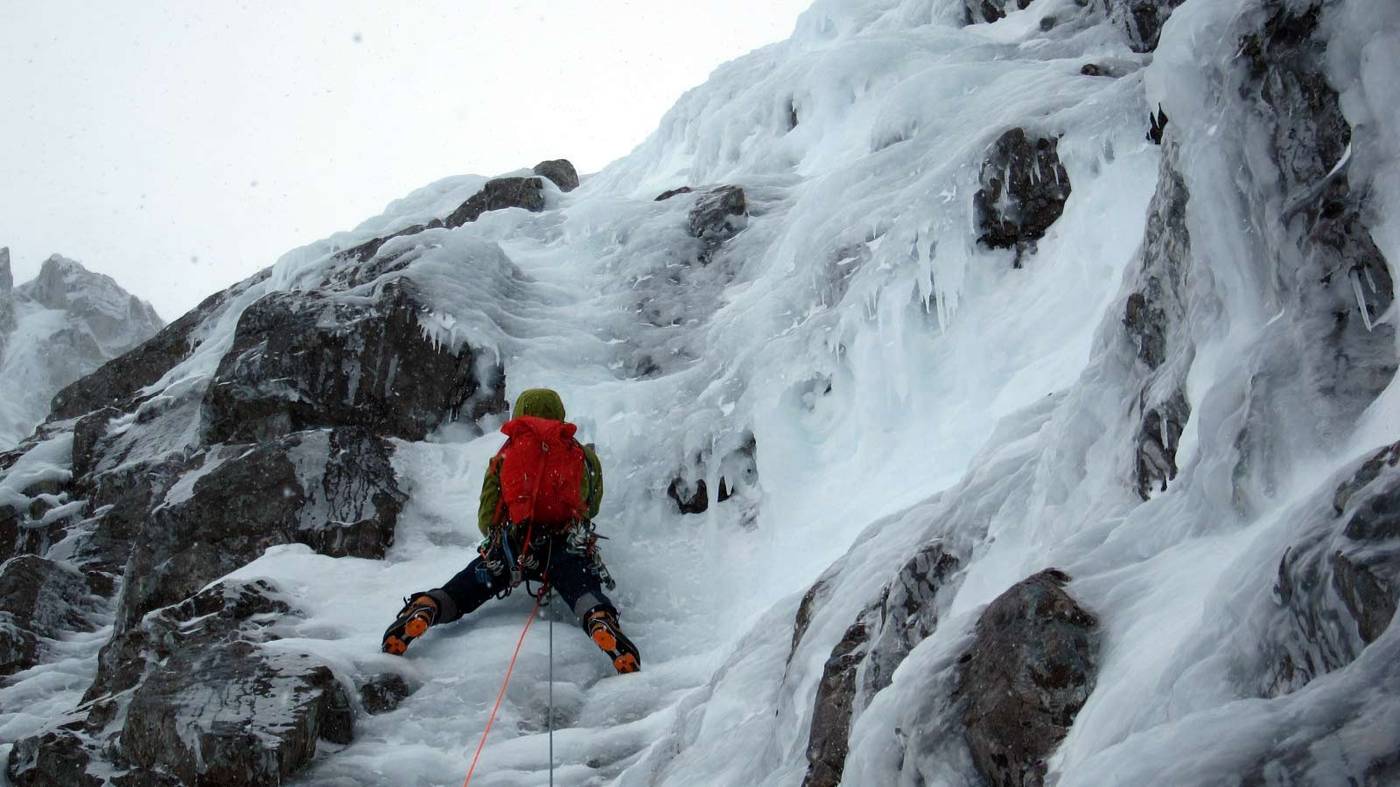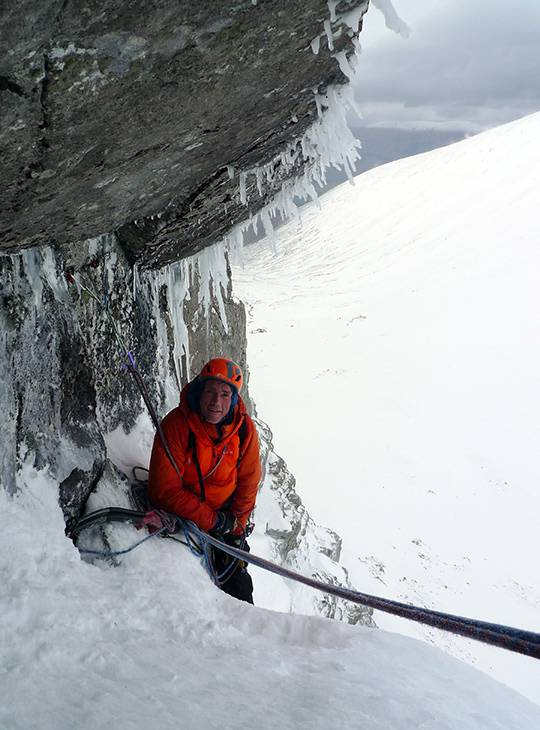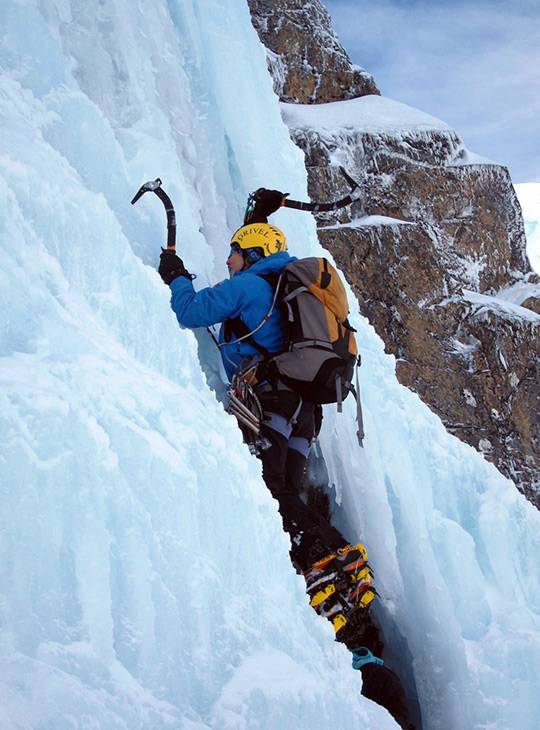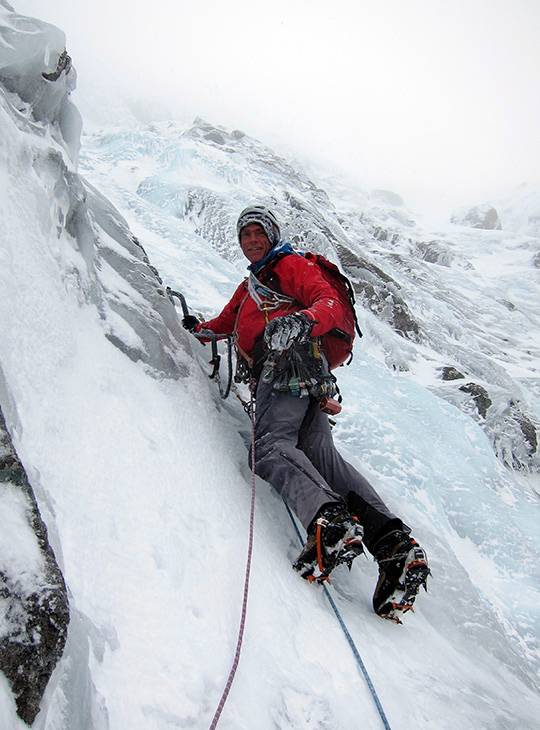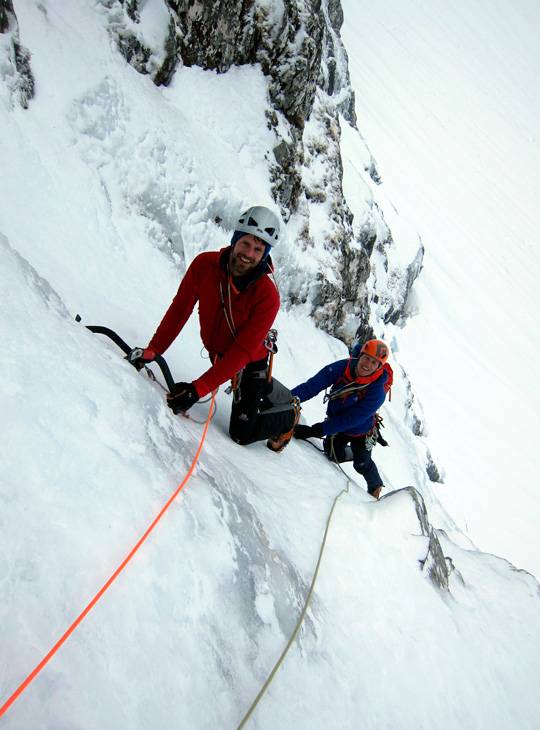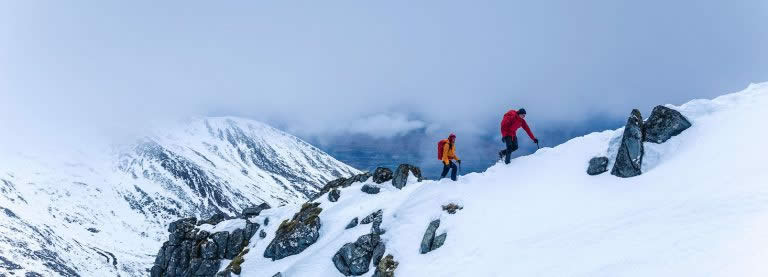What do I need to bring?
- A pair of technical Ice axes* - These would generally be 50cm long with a pair having one with an adze on and one with a hammer on. They should have dropped pick and include leashes or a lanyard. Many types of axes are available the DMM fly is a good example of an axe for easier grades and the DMM Apex is a good example of an axe suitable for higher grades.
- Boots* - Good quality stiff boots that are rated B3 and have a Vibram sole. A good example is the Scarpa Mont Blanc Pro Gtx.
- Crampons* - 12 point crampons that have anti-balling plates on. They should have clip- in rear bindings that are compatible with your boots. Good examples are Grivel G12 and G14s.
- Gaiters - Extremely useful to prevent snow and scree entering your boots and help to keep your feet warm. For example the Mountain Equipment Trail DLE gaiter.
- Crampon Bag - A tough Nylon bag to protect the contents of your rucksack from the sharp points.
- Climbing Helmet* - A CE rated climbing helmet that is large enough to fit over a hat, such as the DMM Ascent.
- Snow/Ski Goggles - An essential item for days out in the Scottish winter environment. A budget pair with two layer lenses will be fine.
- Harness* - A sit harness with adjustable leg loops that is large enough to go over all your layers including waterproofs. A good example is the DMM Mithril.
- Climbing Rack* - Bring along any hardwear that you already own. A belay device, 3 screwgates and a 120cm sling are particularly useful.
- Rucksack* - There is generally a lot more that needs to be carried on a day out in the mountains in winter compared with summer. A 35 to 45 Litre rucksack is fine such as the Deuter Guide 35+.
- Rucksack Liner - Almost no rucksacks are waterproof, so a waterproof liner is needed to keep your kit dry. Either a large dry bag or several small ones works well or a strong plastic bag such as a rubble bag (not a bin bag).
- Flask/water bottle - A small flask (1/2 to 3/4 litre) and a similar sized water bottle. Hydration systems with tubes rarely function well in winter.
- Map - Ordnance Survey 1:50,000 map Sheet 41 of the Glencoe and Ben Nevis area. Ideally laminated or in a small map case.
- Compass* - Silva Expedition Type 4, in degrees.
- Waterproof case for your mobile phone - A method of protecting your mobile phone from the elements is essential.
- Whistle - A cheap plastic whistle is a useful item of emergency equipment.
- Head Torch - An extremely useful item of emergency equipment. A Petzl Tikka + or similar would be fine.
- Survival Bag - An orange plastic survival bag is an important item of emergency equipment.
- Personal First Aid - A small first aid kit in a waterproof bag to include Compeed or similar for blisters, a wound dressing, a triangular bandage and pain relief e.g. Ibuprofen or paracetamol
- Emergency Food - Some spare items of high energy food that are sealed in a bag e.g. Chocolate or muesli bars.
- Sun block and Lip Salve - To provide protection from UV radiation and the wind.
- Trekking Poles - Useful for walking below the snow line and for low angle snow slopes. Should be collapsible into 3 or 4 sections to make stowage inside your rucksack easier.
- Camera - Of your choice - the smaller and lighter the better. Clothing
- Waterproof Jacket* - A robust breathable and waterproof jacket that fits over several layers. It should have a permanently attached hood that is large enough to go over a helmet.
- Waterproof Trousers* or Salopettes - A robust pair of breathable and waterproof over trousers, ideally long side zips (to aid putting on whilst wearing crampons) and braces.
- Insulated Jacket - A large warm jacket to wear whilst stationary is useful. It should be insulated with a synthetic material rather than down, which does not perform well in damp conditions.
- Base Layers - A couple of lightweight 'thermal' tops, short or long sleeved. Should be of a synthetic material and not cotton.
- Mid Layers - A couple of mid weight layers, ideally fleece, gives more flexibility for managing your temperature rather than one thick one.
- Trousers - Fleece trousers or power stretch tights work very well under waterproof trousers.
- Hat - A fleece or wool hat that is suitable to be worn under a helmet - no bobbles! A neck gaiter is useful.
- Waterproof Gloves - At least two pairs are essential. They should be dexterous enough that you can put crampons on whilst wearing them. The Mountain Equipment Guide or similar is recommended.
- Thin gloves - A thin fleece pair is useful for wearing whilst approaching the hills. For example the Mountain Equipment Touch Screen Glove.
- Socks - Several pairs of loop stitch style socks
- Personal clothing and effects for life in the hotel including swimwear for the pool.
*Indicates available to borrow free of charge from our kit store. If you would like to borrow waterproof jacket, waterproof trousers, helmet, winter boots or crampons please complete our equipment loan form available here and return to Plas y Brenin. For all other items marked with a * we don't need to know in advance, just ask your instructor when you get there.
